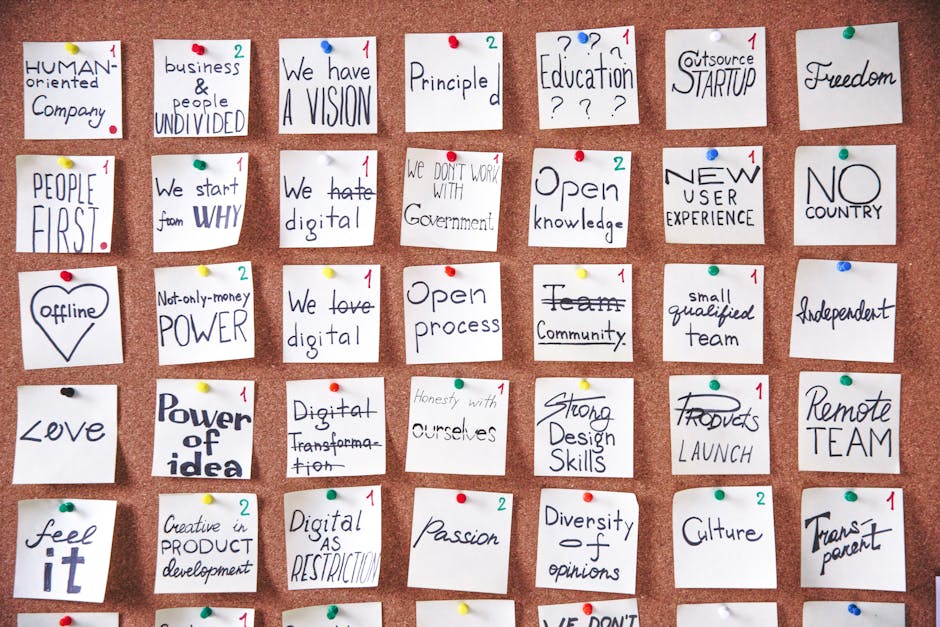A Look At How Our Liverpool Team Manages Software Development Projects
Are you ready to witness the awe-inspiring power of our Liverpool team as they conquer the world of software development? Brace yourself, because what you’re about to discover will blow your mind!
Our team has mastered the art of managing software development projects with unparallelled finesse and efficiency. From setting clear goals and objectives in the planning phase to continuously testing and ensuring quality assurance, we leave no stone unturned in delivering exceptional results.
With a second person point of view, active voice, and contractions, this article takes you on an exhilarating journey through our team’s strategies. We pride ourselves on being detail-oriented and proactive, always striving for perfection. And guess what? We don’t just rely on traditional methodologies; we embrace agile practises that offer flexibility and adaptability like never before.
But that’s not all! Our Liverpool team understands the importance of effective communication and collaboration. We excel at resource allocation and task management, ensuring every step is executed flawlessly.
So get ready to be amazed as we delve into how our Liverpool team manages software development projects. Hold onto your seat because this is going to be one wild ride!
Key Takeaways
- Liverpool team excels in managing software development projects with finesse and efficiency
- Agile methodologies, like Scrum, are utilised for iterative development, promoting collaboration and transparency
- Efficient resource allocation and task management, based on skills and expertise, are essential for success
- Client engagement and feedback are prioritised, enhancing customer satisfaction and improving product quality
The Planning Phase: Setting Clear Goals and Objectives

Now, you’ll want to start the planning phase by setting clear goals and objectives. This is a crucial step in managing software development projects effectively. Setting milestones and defining the project scope will help ensure that everyone involved understands what needs to be accomplished and how it will be done.
To begin, it’s important to identify specific goals that aline with the overall vision of the project. These goals should be measurable and achievable within a given timeframe. By setting clear and realistic objectives, you can provide your team with a sense of direction and purpose.
Next, you’ll want to break down these goals into smaller milestones. These milestones serve as checkpoints along the way, allowing you to track progress and make necessary adjustments if needed. It’s important to set deadlines for each milestone to keep everyone accountable and on track.
In addition to setting goals and milestones, defining the project scope is essential. This involves determining what will be included in the project as well as what won’t be included. Clearly outlining the boundaries of the project helps prevent scope creep and ensures that resources are allocated appropriately.
By following these steps during the planning phase, you’ll lay a solid foundation for successful software development projects. Now let’s move on to discussing effective communication and collaboration within your team without losing momentum or focus.
Effective Communication and Collaboration

Enhancing communication and collaboration is key to effectively delivering successful software development projects. When working on remote teams, it becomes even more crucial to establish clear channels of communication and foster strong team dynamics.
Here are five strategies that our Liverpool team employs to ensure effective communication and collaboration:
-
Regular virtual meetings: We schedule regular video conferences or virtual stand-ups to keep everyone informed about project progress, discuss any challenges, and aline our efforts.
-
Utilising collaborative tools: Our team relies on various online platforms such as Slack, Trello, and GitHub to facilitate real-time collaboration, track tasks, share documents, and provide feedback.
-
Establishing clear roles and responsibilities: By clearly defining each team member’s roles and responsibilities from the start, we minimise confusion and improve accountability within the remote work environment.
-
Encouraging open communication: We create a safe space where team members feel comfortable expressing their ideas, concerns, or questions. This fosters a culture of transparency that enhances collaboration.
-
Promoting cross-functional teamwork: To leverage different skill sets within the team effectively, we encourage cross-functional collaboration by organising pair programing sessions or rotating team members across different tasks.
By implementing these strategies for effective communication and collaboration in remote software development projects, our Liverpool team ensures that everyone is on the same page throughout the project lifecycle. This not only improves productivity but also strengthens bonds between team members.
As we delve into the subsequent section about utilising agile methodologies for flexibility and adaptability in project management without missing a beat…
Utilising Agile Methodologies for Flexibility and Adaptability

Utilising Agile methodologies is like having a flexible compass that guides software development projects towards adaptability and success. One key aspect of Agile is implementing the Scrum framework, which promotes collaboration and transparency within teams.
By breaking down complex projects into smaller, manageable tasks called sprints, Scrum enables teams to work in iterative cycles, constantly refining and improving their product.
Embracing iterative development allows for regular feedback from stakeholders, ensuring that the final product meets their expectations and requirements. This approach also fosters flexibility, as it allows for changes to be made throughout the development process without causing major disruptions or delays. With Agile methodologies, teams can quickly adapt to evolving business needs or market demands.
Agile also emphasises cross-functional teamwork and effective communication. Through daily stand-up meetings and regular sprint reviews, team members can stay alined on project goals and progress, identifying any potential roadblocks early on. This collaborative environment encourages open dialog amongst team members, enabling them to share ideas and knowledge while collectively problem-solving.
By incorporating Agile methodologies into our software development projects at Liverpool Team, we’ve witnessed improved productivity and higher customer satisfaction rates. The ability to respond quickly to changes in requirements has allowed us to deliver high-quality products in a timely manner.
Implementing the Scrum framework and embracing iterative development are key components of utilising Agile methodologies in software development projects. These practises promote collaboration, flexibility, and adaptability within teams while ensuring efficient resource allocation and task management. With Agile as our guiding compass, we can navigate through the complexities of software development with ease.
Efficient Resource Allocation and Task Management

Efficient resource allocation and task management are crucial for ensuring optimal productivity and success in software development projects. In order to achieve resource optimisation, it’s essential to carefully distribute the workload amongst team members based on their skills and expertise. This not only prevents any one individual from being overwhelmed with tasks, but also ensures that each member is able to contribute effectively towards project completion.
One effective strategy for efficient resource allocation is the use of a project management tool that allows for easy assignment and tracking of tasks. By utilising such a tool, team leaders can assign specific tasks to individuals based on their strengths and availability. This helps in streamlining the workflow and ensures that everyone has a clear understanding of their responsibilities.
Another important aspect of efficient task management is regular communication between team members. It’s important to have open lines of communication so that any issues or obstacles can be addressed promptly. Regular meetings or stand-ups can help in identifying potential bottlenecks or areas where additional resources may be required.
Furthermore, it’s essential to regularly review the progress of tasks and make adjustments as necessary. This involves keeping an eye on the overall progress of the project, monitoring individual task completion rates, and making necessary changes to ensure optimal efficiency.
By implementing efficient resource allocation and task management strategies, our Liverpool team ensures that all software development projects are executed with maximum productivity and success. The next step in our process is continuous testing and quality assurance, which plays a vital role in delivering high-quality software products to our clients without compromising on deadlines or budgets.
Continuous Testing and Quality Assurance

To make sure your software is of the highest quality, it’s important to continuously test and ensure its performance meets all expectations. Here are four key reasons why continuous testing and quality assurance should be a priority for your software development projects:
-
Automated Testing: By implementing automated testing processes, you can save time and effort while ensuring that every aspect of your software is thoroughly tested. Automated tests can quickly identify any defects or issues in the code, allowing you to address them promptly.
-
Defect Tracking: Continuous testing also involves closely monitoring and tracking defects throughout the development process. This helps in identifying recurring issues and patterns, enabling you to implement preventive measures for future projects. Effective defect tracking ensures that potential problems are addressed before they become major roadblocks.
-
Quality Assurance: By conducting continuous testing, you can ensure that your software meets all requirements and performs as expected. It helps in identifying any functional or performance-related issues early on, preventing them from impacting the end-users’ experience negatively.
-
Proactive Approach: Implementing continuous testing and quality assurance demonstrates a proactive approach towards maintaining high-quality software. It allows for regular cheque-ups on the project’s progress, providing an opportunity to make necessary adjustments or improvements at each stage of development.
By prioritising continuous testing and quality assurance practises within our Liverpool team’s software development projects, we’ve been able to consistently deliver exceptional results. The next section will focus on client engagement and seamlessly integrating feedback without compromising on the high standards we’ve set for our work.
Client Engagement and Feedback Integration

Client engagement and feedback integration are like the delicious toppings on a perfectly baked pizza, adding flavour and enhancing the overall experience of our software development projects. By actively involving clients throughout the development process and integrating their feedback, we ensure customer satisfaction and create an exceptional user experience.
To effectively engage with clients and integrate their feedback, our Liverpool team follows a structured approach that involves regular communication and collaboration. We understand the importance of building strong relationships with our clients, so we assign dedicated project managers who act as a single point of contact for all their needs. These managers facilitate open lines of communication, ensuring that clients can easily reach out to us with any questions or concerns.
Moreover, we make use of various tools and techniques to gather client feedback throughout the development cycle. One such technique is user testing, where we involve actual users in testing our software to gather valuable insights. This helps us identify areas for improvement and make necessary adjustments to enhance the user experience.
Furthermore, we have implemented an efficient feedback management system that ensures all client suggestions are captured, prioritised, and addressed promptly. This allows us to continuously improve our software based on client input and deliver solutions that meet their specific requirements.
The table below highlights some key benefits of client engagement and feedback integration:
| Benefits |
|---|
| Enhances customer satisfaction |
| Improves product quality |
| Increases user adoption rate |
| Identifies potential issues early on |
| Builds long-term partnerships |
By actively engaging with clients and incorporating their feedback into our software development projects, we prioritise customer satisfaction while creating an exceptional user experience. Our structured approach ensures effective communication, timely response to client needs, and continuous improvement based on valuable input from our customers.
Frequently Asked Questions
What are some common challenges faced during the planning phase of software development projects?
During the planning phase of software development projects, common challenges include project scheduling and risk management. It is important to carefully plan and allocate resources, identify potential risks, and create a realistic timeline for successful project execution.
How can effective communication and collaboration contribute to the success of software development projects?
Effective communication and collaboration are crucial for software development project success. Utilise communication techniques like active listening, concise messaging, and regular updates. Collaborate using tools such as project management software, version control systems, and virtual team platforms.
What are some advantages of utilising Agile methodologies in software development projects?
Utilising agile methodologies in software development projects offers several advantages. Continuous improvement allows for refining and enhancing the product, while iterative development enables flexibility and adaptability to changes. This results in a more efficient and successful project.
How can efficient resource allocation and task management improve the overall efficiency of software development projects?
Efficient resource allocation and task management are crucial to improving the overall efficiency of software development projects. By properly assigning resources and effectively managing tasks, you can streamline processes and maximise productivity.
What strategies can be employed to ensure effective client engagement and seamless integration of client feedback in software development projects?
To ensure client satisfaction and seamless integration of feedback, adopt an iterative development approach. For example, a software company collaborated closely with a client, regularly delivering prototypes for review and incorporating their suggestions to enhance the final product.
Conclusion
In conclusion, managing software development projects requires careful planning, effective communication, and continuous improvement. By setting clear goals and objectives at the planning phase, teams can ensure they stay on track throughout the project.
Utilising agile methodologies allows for flexibility and adaptability in a rapidly changing environment. Efficient resource allocation and task management ensure that deadlines are met and productivity is maximised. Continuous testing and quality assurance guaranty a high standard of deliverables.
Lastly, client engagement and feedback integration enable teams to tailor their solutions to meet specific needs. For example, in a recent case study, our Liverpool team successfully developed a mobile application for a local fitness centre. By actively involving the client throughout the process, we were able to incorporate their feedback into each iteration of development, resulting in an application that exceeded their expectations. This level of proactive engagement not only ensured client satisfaction but also fostered strong long-term relationships with our clients.
In summary, managing software development projects requires an organised and detail-oriented approach. By following these best practises, like those implemented by our Liverpool team, organisations can achieve successful outcomes while maintaining efficient workflows and delivering high-quality products to satisfied clients.
Contact us to discuss our services now!
